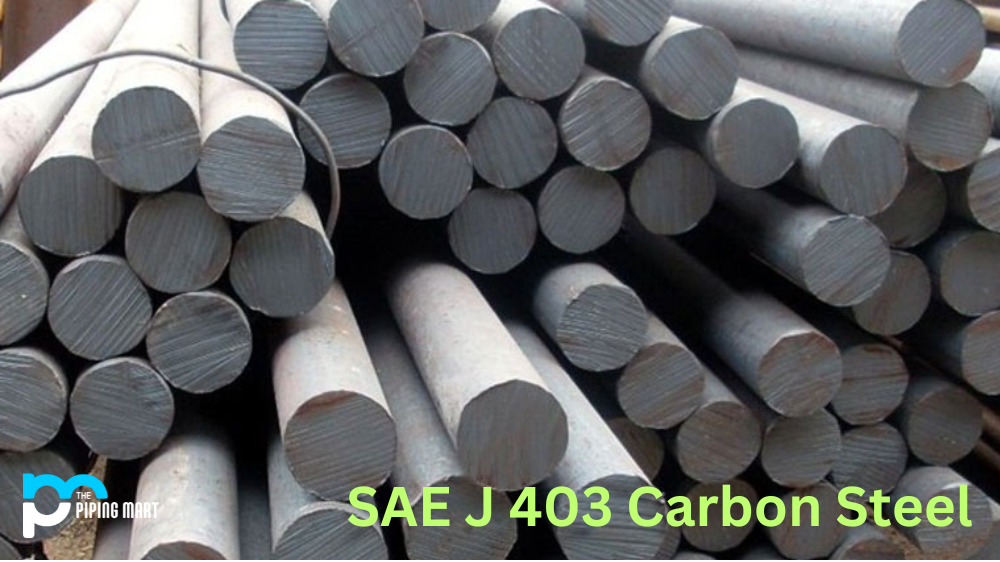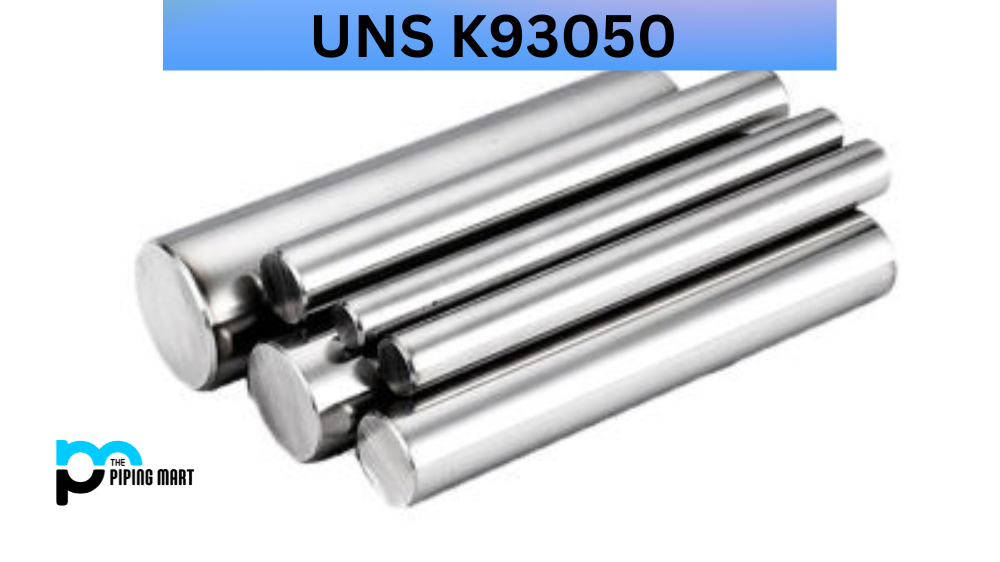Carbon steel is prevalent in many industries due to its strength and durability. IN PARTICULAR, SAE J 403 carbon steel is widely used in various applications such as automotive parts, machinery components, and construction materials. In this blog post, we’ll delve deeper into some j 403 carbon steel, understanding its composition, mechanical and physical properties, heat treatment, welding, machining and more.
What is SAE J403 Carbon Steel?
SAE J 403 is a type of carbon steel with a chemical composition of 0.15-0.60% manganese, up to 0.90% carbon, and small amounts of sulfur & phosphorus. It is primarily used for automobile parts and other mechanical components due to its superior strength & ductility compared to low-carbon steels.
SAE J403 Composition
SAE J 403 carbon steel is a carbon (non-alloy) steel formulated for primary forming into wrought products. The chemical composition of this steel is Iron (Fe) 99.08-99.53%, Carbon (C) 0.15-0.22%, Manganese (Mn) 0.30-0.60%, and Silicon (Si) 0.15-0.35% (by weight). The low carbon content makes this steel easy to shape, mould, and weld without cracking, making it an ideal choice for multiple applications.
| Component Elements Properties | Metric | English | Comments |
|---|---|---|---|
| Carbon, C | <= 0.060 % | <= 0.060 % | |
| Iron, Fe | 99.5 – 100 % | 99.5 – 100 % | As remainder |
| Manganese, Mn | <= 0.35 % | <= 0.35 % | |
| Phosphorous, P | <= 0.040 % | <= 0.040 % | |
| Sulfur, S | <= 0.050 % | <= 0.050 % |
SAE J403 Mechanical Properties
The mechanical properties of SAE J 403 carbon steel depend on its heat treatment (tempering, quenching or annealing). The yield strength of this steel ranges from 310-620 MPa, while the tensile strength is 540 MPa. The elongation (stretching) capability ranges from 10-27%. Also, the impact strength of SAE J 403 carbon steel is high and can resist deformation under high strains.
| Mechanical Properties | Metric | English | Comments |
|---|---|---|---|
| Modulus of Elasticity | 200 GPa | 29000 ksi | Typical for steel |
| Bulk Modulus | 140 GPa | 20300 ksi | Typical for steel |
| Poissons Ratio | 0.290 | 0.290 | Typical For steel |
| Shear Modulus | 80.0 GPa | 11600 ksi | Typical for steel |
SAE J403 Physical Properties
SAE J 403 carbon steel has a low density and is relatively lightweight, making it suitable for structural engineering designs. It has a melting point of 1425-1549 °C (2600-2820 °F) and a thermal conductivity of 50.1 W/mK. It has a high modulus of elasticity, and its coefficient of thermal expansion is relatively low. Also, it has excellent corrosion resistance in specific environments.
| Physical Properties | Metric | English | Comments |
|---|---|---|---|
| Density | 7.872 g/cc | 0.2844 lb/in³ | Composition 0.06% C, 0.38% Mn, 0.01% Si, annealed at 925°C |
SAE J403 Uses
The versatility of SAE J 403 carbon steel makes it a popular material for various industries. It is often used in automotive parts, pipes and tubing, construction equipment, machinery components, and even decorative items such as ornamental ironwork. Thanks to its excellent strength, durability, and ductility, SAE J 403 carbon steel is a reliable choice for projects requiring functionality and aesthetic appeal.
SAE J403 Machining
SAE J403 carbon steel materials are often machined using various techniques, such as milling, grinding, drilling, and cutting. The optimal speed and feeds should be adjusted to the material conditions to maximize efficiency and reduce excess wear on tools. Depending on the exact part geometry, some finishing operations may be necessary post-machining for improved accuracy.
SAE J403 Heat Treatment, Machining
Heat treatment can alter the mechanical and physical properties of SAE J 403 carbon steel. For example, quenching and tempering can increase its hardness and tensile strength. It can also be annealed to relieve stress and improve ductility. Machining this steel requires some expertise, but it generally machines easily. Welding it to other steels or metals requires some care because its low carbon content can result in the cracking of the material. Proper heating and cooling techniques can avoid this.
SAE J403 Welding
Welding of SAE J403 carbon steel can be done using arc welding processes like shielded metal arc welding (SMAW), gas metal arc welding (GMAW), and flux core arc welding (FCAW). Correct joint preparation, consumables, and parameters are necessary for good-quality welds. Ensure to properly clean the components to remove any oxide layers that may form on the surface. It is also important not to exceed preheat and interpass temperatures, as this can harm the overall integrity of welded joints.
Conclusion
SAE J 403 carbon steel is a popular and versatile material used in numerous applications. Its low carbon content makes it easy to work with, shape, mould, and weld. This steel’s mechanical and physical properties vary according to heat treatment, but it is generally valued for its strength, hardness, and ductility. Its high impact resistance and excellent corrosion resistance make it a reliable choice for many industries, especially construction, automotive, and decorative. Understanding the properties and uses of this material is instrumental in its practical deployment.

Abhishek is a seasoned blogger and industry expert, sharing his insights and knowledge on various topics. With his research, Abhishek offers valuable insights and tips for professionals and enthusiasts. Follow him for expert advice on the latest trends and developments in the metal industry.




